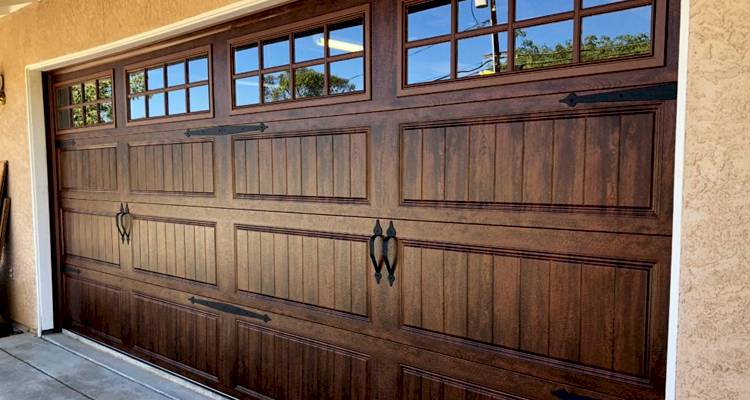Remove a Tree Stump Cost
- The average cost of tree stump removal is £225 in the UK.
- This job takes between 30 minutes and 2 hours to finish.
- Tree stump removal costs in 2025 by size and method.
- What's involved and how long it takes.
- How to find and hire a local tree surgeon.
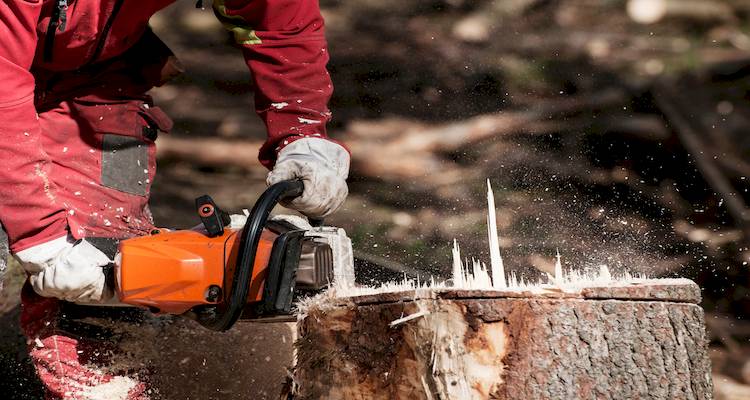
£225
Table of Contents
- How Much Does It Cost to Remove a Tree Stump?
- Supply Only Costs
- Additional Costs
- Labour Costs and Timescales
- Cost Factors of Removing a Tree Stump
- What's Involved in Removing a Tree Stump?
- Can I Remove a Tree Stump Myself?
- Building Regulations & Planning Permission for Tree Stump Removal
- Types of Tree Stump Removal
- Hiring Contractors to Remove a Tree Stump Checklist
- FAQs
- Sources
How Much Does It Cost to Remove a Tree Stump?
Stump removal is the complete removal of any size tree stump, which can be achieved either by excavation, normally done with machines, or by grinding the stump out, which is the most common method.
The cost of stump removal will be determined by the method you choose, the size of the stump, and the ease of access to the site.
In this post, we'll go over the extra fees of removing a tree stump, including additional charges, tradesperson fees, and supply prices. In some cases, other works may be required, especially if, after the tree stump was removed, you decide to improve your garden by adding artificial grass or by creating a nice landscape.
We'll also discuss the duration of removing a tree stump, the various types of removals, and the benefits tree removal has for your property.
The overall cost of removing a tree stump is determined by many factors, including the size of the stump, the number of stumps that need to be removed, the method of extraction chosen, and your location, with labour costs in London and the surrounding areas being higher than the rest of the UK.
Even if a tree stump isn't particularly large, its root in the ground can be extensive, making removal difficult. As a result, hiring a professional tree surgeon is advised to ensure that the root is removed and to reduce the risk of harm.
If you have multiple stumps that need to be removed, the price will rise gradually, though many tradespeople offer discounts for removing multiple stumps.
If the tree stump is low to the ground, the best rule of thumb for calculating the cost of tree stump removal is usually £3 to £5 per inch of diameter. Note that this is only the removal cost; adding labour charges to the cost will raise the price.
Companies vary in how they price the job – some charge per stump rather than their time, and vice versa – so you should double-check with the expert about their rates.
Also, bear in mind that if you have multiple stumps or a large tree stump, the removal cost will be between £150 and £300 in labour charges considering the amount of work involved.
Tree Stump Removal Prices
| Size | Method | Cost |
|---|---|---|
| Single, smaller than 5 inches | Removal | £150 – £200 |
| Single, bigger than 5 inches | Removal | £200 – £350 |
| Multiple stumps | Removal | £200 – £350 |
| Single, smaller than 5 inches | Grinding | £40 – £80 |
| Single, bigger than 5 inches | Grinding | £80 – £350 |
| Multiple stumps | Grinding | £80 – £350 |
How much does it cost to remove a tree stump, and how long does it take for the earth to settle after?
Supply Only Costs
Labour costs can sometimes cause the final cost to rise as the time taken to complete a task gradually increases.
As a result, most people decide to take on challenges to save money. For example, you could eliminate a tree stump yourself if you are a handyman and don't mind getting your hands dirty.
We'll go over the supply costs only, without any labour costs, so you know what you'll need and how much it'll cost to buy it. So, if you want to do your tree stump removal, you'll find everything you need right here.
First, you'll need a mattock, which will cost you between £25 and £180 depending on the quality you want, or a shovel, which will make the job easier but less expensive; a shovel will cost you between £10 and £70.
A chainsaw will be required for tree stump removal, which will cost between £70 and £250.
Then you'll need to buy a hydraulic lever, which will cost between £50 and £80, as well as a grinder wheel, which will cost between £40 and £70.
Then, if any mess has been made, you'll need a power washer, which will cost you between £250 and £500, or you could rent one with some research. Finally, you may also require an axe, which will cost between £20 and £80.
| Supply | Cost |
|---|---|
| Mattock | £25 – £180 |
| Shovel | £10 – £70 |
| Chainsaw | £70 – £250 |
| Hydraulic Lever | £50 – £80 |
| Grinder Wheel | £40 – £70 |
| Power Washer | £250 – £500 |
| Axe | £20 – £80 |
Additional Costs
As mentioned earlier, when removing a tree stump the overall costs may increase because of other jobs coming up. So, if you want to know about these additional costs, and be prepared if these works are needed, this is the right place to be.
Tree Felling
Estimating the exact cost of tree felling can be difficult because prices vary greatly depending on the diameter, height, and type of tree and its location in the garden. As you might expect, the larger the tree, the higher the cost of the job.
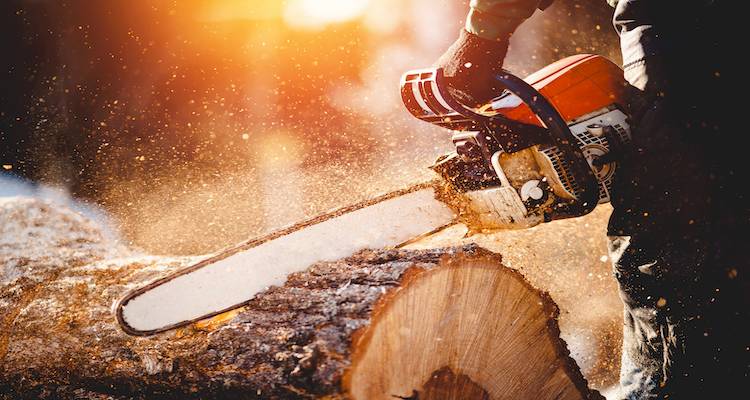
The easiness to the tree also plays a significant role in the job's overall cost, as the more complicated it is to get to, the longer the work will take, increasing the cost of the job.
A tree surgeon will charge between £150 and £200 per day for labour in most cases. Because some parts of the job are difficult to complete alone, tree surgeons will frequently work with one or two general labourers.
Keeping this in mind, you can expect to pay an average of £300 to £400 per day for labour.
| Job | Duration | Average Cost |
|---|---|---|
| Small Tree Felling (Less Than 25ft) | 3 – 4 Hours | £150 – £350 |
| Medium Tree Felling (25-50ft) | 0.5 – 1 Day | £200 – £750 |
| Large Tree Felling (50-75ft) | 1 – 2 Days | £650 – £1,200 |
| Extra-Large Tree Felling (Over 75ft) | 2 – 5 Days | £1,000 – £2,500 |
Tree Trimming
Trimming a tree can be an expensive task. It necessitates specialised knowledge and equipment, and it can be a hazardous occupation. Tree trimming prices will vary significantly depending on a few important components. These are primarily the amount of work involved and the size of the tree.
So, having a small quality of work completed on a small tree, such as having the crown lifted, can cost between £250 and £300. A large job, such as crown reduction on a large tree, can cost £4,000 and £5,000. These are the prices for tree trimming services that you will only receive on rare occasions.
Fruit trees and common garden trees require much less pruning. These are tasks that you might complete once a year. These costs are much lower than those for tree trimming and are typically between £100 and £350.
| Job | Duration | Average Cost |
|---|---|---|
| Small Tree Trimming (Crown lifted) | 0.5 - 1 Day | £250 – £300 |
| Medium Tree Trimming (Crown trimmed) | 1 - 3 Days | £250 – £800 |
| Large Tree Trimming (Crown reduction) | 1 - 3 Days | £4,000 – £5,000 |
| Fruit and common garden trees | Once a Year | £100 – £350 |
Artificial Grass Cost
After you have had your tree stump removed, you may decide to improve your garden. As a result, you may want to install artificial grass in your garden to avoid the hassle of constantly maintaining it. However, how much does it cost?

The average cost of artificial grass depends on the size of your garden and the type of grass you choose to install. A small garden (approximately 12m by 3m) starts at around £400 and can go up to £1,500. This price includes both material and labour costs.
Prices for an average-sized UK garden (approximately 70m²) start at around £800 and rise to just over £3,500. The final cost will be based on the size of your garden, the intended use, and the quality of the artificial grass you select.
Labour costs will also impact the final budget. However, this will vary depending on the length of time installation takes, as the vast bulk of grasses is installed in the same manner.
Garden Landscaping
If you want to enhance your home's exterior, you should consider the cost of landscaping a garden. After removing a tree stump, you may want to give your garden some extra attention, so investigate landscaping and its cost!
If you'd prefer to hire a landscaper to place turf, the average cost would be £260 to £300 for a 20m² area and £650 to £750 for a 50m² area. Artificial grass costs around £1,300 to £1,600 for a 20m² area and up to £3,250 to £4,000 for a 50m² area.
Decking would cost around £600 to £750 for a 6m² area or £1,000 to £1,250 for a 10m² area. A raised vegetable bed can cost anywhere between £120 and £520 for a 4m² area.
When it comes to installing a patio, the cost is around £360 to £480 for a 4m² area or £800 to £1,200 for a 10m² area. If you want to build a back garden pond, it will cost between £260 and £530 for a one square metre pond.
The landscaping cost for any of these jobs can be affected by the size of the garden, easy accessibility, and location.
| Job | Area | Average Cost |
|---|---|---|
| Placing Turf | 20m² | £650 – £750 |
| Placing Turf | 50m² | £100 – £350 |
| Placing Artificial Grass | 20m² | £1,300 – £1,600 |
| Placing Artificial Grass | 50m² | £3,250 – £4,000 |
| Decking | 6m² | £600 – £750 |
| Installing a Patio | 4m² | £360 – £480 |
| Installing a Patio | 10m² | £800 – £1,200 |
| Raised vegetable bed | 4m² | £120 – £520 |
| Building a Pond | per 1m² | £260 – £530 |
Garden Waste Removal
When the tree stump is removed, you may be required to pay for garden waste removal separately. Although some gardeners would include this service in their quoted price, you should never take this for granted.
If you need to hire a different company to remove the waste for you, garden waste removal costs are between £15 and £300, depending on how much waste needs to be removed.
Another option for waste removal is to rent a skip. This will typically cost between £70 and £400, depending on the size of the skip.
Garden Maintenance
After your tree stump has been removed, you may want to hire a gardener to come and do some garden maintenance work. This can include hedge trimming, mowing, and cleaning up your flowers.
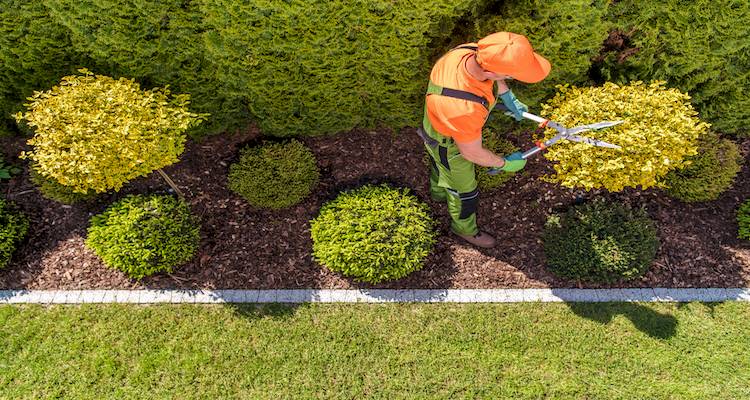
The cost of garden maintenance is determined by the amount of work required and the length of time the gardener spends on your property. A typical gardener will cost between £14 and £25 per hour.
Is honey fungus on a tree stump bad? Do I need to get the stump removed?
Labour Costs and Timescales
Most of the time, tradespeople's costs and duration account for most of the overall cost, so realising what to expect with labour costs will be useful when you need it. As a result, we will go over the average labour cost and what will cause labour costs to rise.
On average, tree stump removal labour will cost between £50 and £150. Your contractor could charge you per item or give you a flat rate for the entire job; it's a good idea to talk to them and shop around before accepting the first quote. It also depends on the type of contractor you choose, such as a handyman, tree surgeon, etc.
Because of the amount of work required, if you have several stumps or the tree stump is quite large, the cost of removal will range between £150 and £300 in labour charges. In addition, some tree stumps will require more than one day to remove, necessitating the deployment of a small team.
However, tree stump removal costs around £40 per stump. This is because some tree stump removal jobs require only one person, while others require two or three. Tree stump removal labour costs typically range between £30 and £190, based on the complexity of the job and the method used.
The time it takes to grind a tree stump depends on its size, soil, and species. For example, planting small, immature trees with a radius of three inches may take fifteen minutes. Larger trees may require two hours or more to fall. In rocky soil, stump grinding would, therefore, take longer than in fine, sandy soil.
A small tree stump, for example, can be ground in minutes, whereas a large tree stump can take nearly an entire day to grind, based on the hardness of the wood and the length of time the tree stump has been dead.
Depending on the method used, the depth of the tree stump, and the type of wood, removing a tree stump can take anywhere between 30 minutes to 4 hours. Because there are so many different factors, it's best to get a quote from your tradesperson before they begin work.
Cost Factors of Removing a Tree Stump
Tree stump removal can be a difficult task, with so many variables that can increase the cost of the job. We will go over the various cost influences of removing a tree stump in this section.
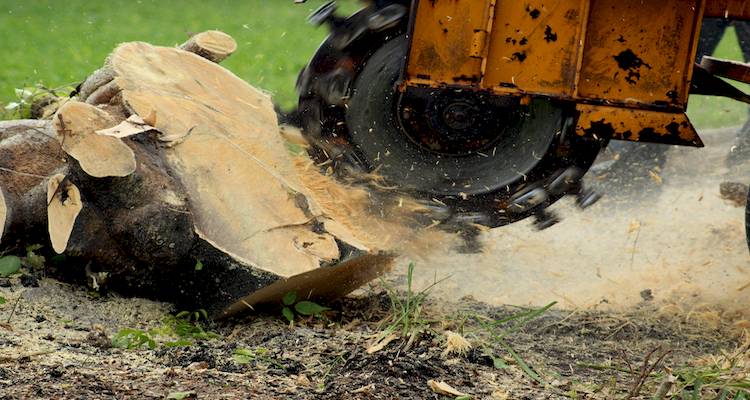
Tree Stump Removal Size
Typically, the size of the tree stump is the most important factor in determining the price. The smaller the stump, the less effort required. The lower the labour cost, the less work required, and vice versa. This holds whether the labour cost is calculated hourly or per metre.
The size of the tree stump has no effect on the cost of labour unless the time needed to maintain or remove a larger tree stump spreads the job into another working day.
Location
The cost of living in London and the south of England is higher than in the rest of the country. Therefore, if the contractor must travel outside a certain radius, they may charge an additional fee. However, you should not have to pay extra unless you live in a rural area or want to use a tree surgeon who works further away.
Access
Accessibility may increase costs, especially if the stump is in a hazardous or difficult location. In addition, if gaining access to the stump is more difficult, such as bringing in machinery, you will need to account for the extra time to complete the job.
Method
Depending on the method of removal chosen, you may find that the job requires more labour; for example, if you intend to use the area to plant flowers or grass afterwards, you will need more stump removal than if you intend to lay slabs over the area or if it is in the outside area of your garden.
Planning
You must also consider whether it is necessary to remove any roots attached to the stump or if it is suitable to leave them in place.
If the stump is near underground pipes or cables or close to a structure or property, this must also be considered, and more planning and careful execution of the task will be needed to ensure the surrounding areas are not harmed.
What's Involved in Removing a Tree Stump?
When referring to a specific plant, gardeners frequently use the term variety, but the correct botanical term is 'cultivar'.
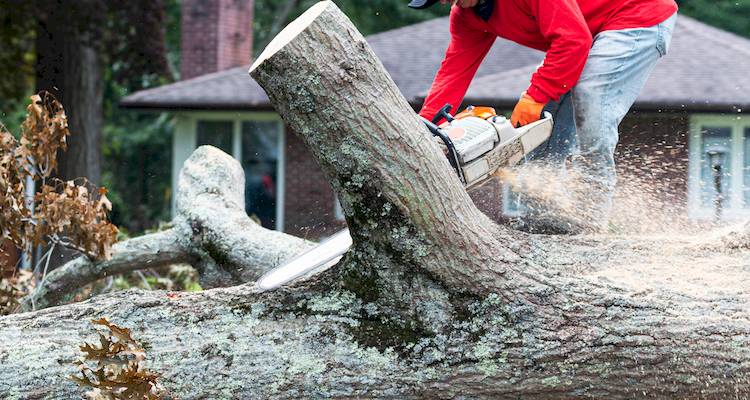
Whatever term you use, it refers to a distinct plant or plants that have been bred to improve specific characteristics such as flowers and fruit size, colour, flavour or smell, plant size, hardiness, disease resistance, and so on.
Furthermore, variety has another meaning in botany: it refers to a naturally occurring distinct plant with only minor differences in appearance. The upright habit of Malva Alcea var. fastigiata, for example, distinguishes it from other plants.
The first line of defence should be cultivar selection, garden hygiene, and inspiring or introducing natural enemies. If chemical controls must be used, they should be used sparingly and precisely.
Tree stumps can be removed physically at any time. However, the most convenient way to remove stumps is to pay tree surgeons to remove them while the tree is falling.
Chemical stump removals must be applied to freshly cut wood, so they should be applied as soon as possible after felling. If not, they will need to be recut before the product can be applied.
Here, we will go through what is involved in removing a tree stump.
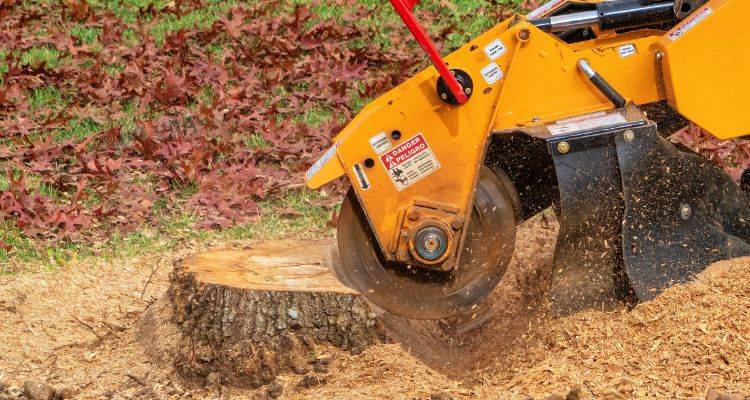
A winch can be used to remove stumps from smaller trees. Gardeners who understand how to use them safely can hire them. It is preferable to leave a better-sized stub on the stump (up to 1.2m (4ft) high) instead of cutting it off at ground level for leverage.
Most of the root system is removed by grubbing out with a hand or mechanical mini excavator. It is easiest to remove trees if they are cut down so that a significant length of the trunk remains to provide leverage for removal.
Landscape contractors are frequently skilled at stump removal, but mini-excavators and operators can be hired separately.
Alternatively, tree stump grinders will physically grind out the main root plate, abandoning fine sawdust behind. Even though stump grinders can be rented, they are potentially dangerous and should only be used by gardeners who are confident in using machinery safely.
Some roots will inevitably remain in the ground, but the vast majority will rot away.
It is important to specify how deep you want the stump ground. Shallow grinding, 20cm to 25cm (8" to 10"), is usually sufficient for laying turf, but replanting or landscaping allows for deeper grinding, 30cm (1ft) or more.
Consider what you want to do with the sawdust. It can be left in the hole to fill it, used as compost in other garden areas, or removed by the contractors.
Before the work begins, specify which of these you prefer, and make certain that any diseased wood is completely removed.
If you want to replant the area, remove most of the sawdust and fill the hole produced by stump grinding with topsoil.
If a large amount of sawdust was unintentionally mixed with the existing soil, it is normally worth adding nitrogenous fertiliser before planting to avoid nutrient lockup problems. Consider incorporating chicken manure pellets or ammonia sulphate.
Always use the method recommended by the manufacturer. This may entail treating the entire cut surface of the stump, drilling holes around the living edge of the stump to pour the granules into or making wedge-shaped incursions around the edge of the bark with a chisel or axe (often used for standing trees).
These notches can then be loaded with granules or brushed with weedkiller or tree stump killer liquid.
Can I Remove a Tree Stump Myself?
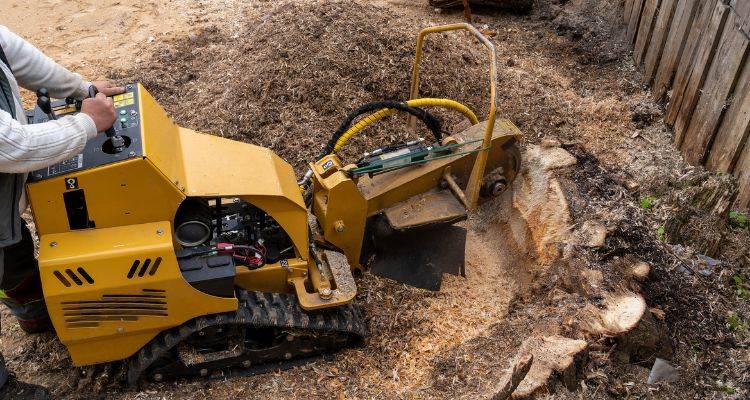
If you don't want to pay an expert to remove a tree stump from your property, you can do it yourself, and you'll almost certainly save money on labour if you're willing to do the work.
Physically removing the stump by hand won't cost much if you already have a well-stocked arsenal of gardening tools, but if you don't, the tools recommended won't cost an arm and a leg to invest in and may come in handy for future projects.
If you choose stump grinding, you can rent the machinery for around £50 to £100 per day if you want to complete the task yourself. However, you should only do this if you are confident enough to do the job - otherwise, it will be best to hire an expert.
If you decide to burn a tree stump yourself, keep in mind that kerosene is not an advised accelerant because it hardens the wood and makes it much more difficult to remove, either by yourself or with expert support; potassium nitrate costs about £8.50 per kilo, and is a great oxidiser, which means it will help your fire maintain its heat while burning.
Likewise, it works well in the chemical method of tree stump removal, and while it takes a long time to see the results, therefore, the physical effort required in this method is reduced.
Always use the method recommended by the manufacturer. This may entail treating the entire cut surface of the stump, drilling holes from around the living edge of the stump to pour the granules into or making wedge-shaped incursions around the edge of the bark with a chisel or axe (often used for standing trees).
These notches can then be filled with granules or swept with weedkiller liquid.
When removing a tree stump, is using stump-killing plugs a safe method for use around children and pets?
Building Regulations & Planning Permission for Tree Stump Removal
TPOs are created by Local Planning Authorities to protect trees that provide significant amenity value to the community. This safeguard is especially important in areas where trees are under threat.
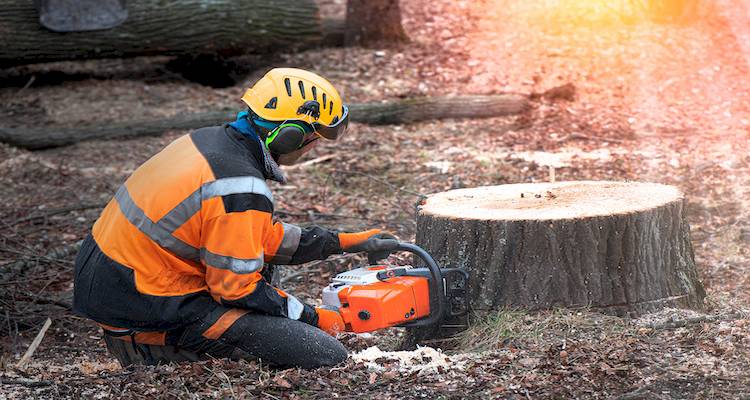
Every type of tree can protect anything from a single tree to all trees within a defined area or woodland. Therefore, a Tree Preservation Order can protect any species, but no species is automatically protected.
A TPO is a written order that makes it a crime to cut down, top, lop, wilfully damage, uproot, or destroy a tree guarded by that order or to cause or license such actions without the authority's permission.
Anyone found guilty of an offence faces prosecution. In severe cases, the case may be heard in Crown Court, where an unlimited fine may be imposed.
To make an application for tree work, you must fill out an application form and submit it to the LPA.
Many trees are guarded by tree preservation orders, which means that you must obtain the council's permission to prune or fell them. In addition, many other trees in conservation areas are subject to control.
If you are uncertain about the status of trees you intend to prune or fell, contact your local council.
Types of Tree Stump Removal
As time has passed, the number of methods for removing a tree stump has increased. As a result, if you are unsure which method to use, this article will show you the various types and the benefits and drawbacks of each method. Continue reading if you want to learn more.
Tree Stump Removal Using Chemicals
While chemically destroying a tree may appear to be a simple option due to the marketing of these products, there are several distinct chemical application techniques, each with its own set of risks and degrees of achievement.

Chemicals are frequently sprayed, injected through drilled holes into the trunk, applied to fresh wounds in the tree, or implanted into the soil. They can take up to six weeks after treatment to take effect, and if the chemicals were not applied the first time properly, they might need to be adjusted again.
Unfortunately, homeowners who try to do this without the help of a professional may unknowingly harm nearby vegetation. This could occur because of an unintentional application or because the roots of trees are commonly grafted to the roots of other nearby plants, so poison injected into one can kill an entire area.
Pros
✔ Simple to use, needing little physical effort.
✔ Cost-effective and reasonably priced compared to manual stump grinding.
✔ Gradual decomposition, requiring no further intervention.
Cons
✖ Because the chemicals are so potent, they can kill the entire area.
✖ Chemical removal is more time-consuming than manual removal, as the process can take months to complete.
✖ Environmental concerns from using chemicals.
Hand Stump Extraction
While hand stump removal is a more environmentally friendly option than using chemicals, it is time-consuming and may necessitate specialised equipment depending on the size of the tree. If the tree is small, the stump can be eliminated by digging a trench around the area and using a pickaxe to remove the main root system.
However, because nature is designed to repair itself, you must keep an eye out for sprouts and cut them off as soon as it occurs, depriving the remaining roots of the energy they need to grow.
Pros
✔ Manual stump extraction is better for the environment compared to chemical removal.
✔ Roots are removed, getting rid of the entire stump in one go.
✔ Relatively low-cost, just needing some basic tools.
Cons
✖ Manual stump removal is a labour-intensive approach, making it more costly due to labour costs.
✖ Higher risk of injury.
✖ Can still take a long time to remove the stump, depending on the depth of the roots.
Using Fire to Remove Tree Stump
While using fire to remove a tree stump requires little equipment, it can be a dangerous endeavour that is sometimes futile, leaving you with a burnt stump.
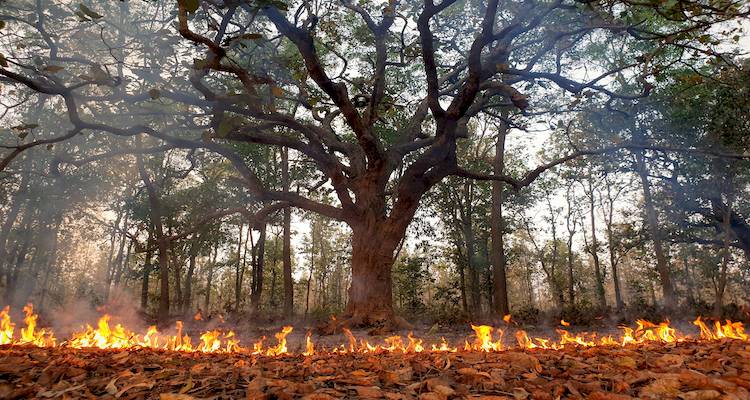
Drill large holes into the stump and fill the holes with kerosene or fuel oil to burn it down. Allow at least two weeks for the fuel to settle before setting a fire in one of the holes.
When a match is dropped, the stump will smoulder for occasions, so keep children and pets away from the area. To avoid being penalised, you should check with your local council.
Pros
✔ It's simple to do and relatively fast when compared to chemical removals.
✔ Inexpensive, requiring minimal tools or equipment.
✔ No heavy lifting, and it isn't labour-intensive.
Cons
✖ Fire removal is hazardous, and the fire can easily spread to other areas.
✖ Smoke can harm surrounding plants and vegetation, causing environmental issues.
✖ Some councils may oppose it, and it may even be illegal in some areas.
Hiring Contractors to Remove a Tree Stump Checklist
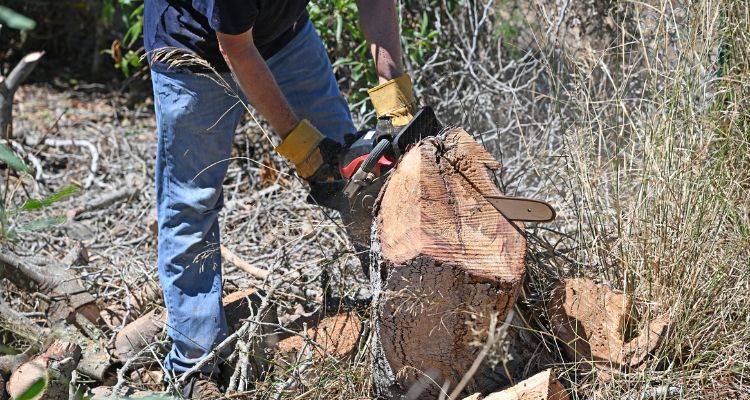
As with any job, it's critical to select the right professional for the job at hand. Selecting the right arborist for the job is critical because of the potential hazards to the workers, yourself, and your property.
- Inquire if they are insured and request any relevant documentation to back this up. You have the right to ask for references from your arborist; they should have a good track record of previous work. Do you know anyone who has the same work completed, and how do they feel it was handled?
- A good tree service will be knowledgeable and will be able to answer any questions you may have about the work. This is encouraging because it demonstrates that they know the various factors that must be considered when providing a quote and undertaking various projects.
FAQs
Can you remove a tree stump by hand?
What is the quickest way to remove a tree stump?
Is it a good idea to remove a tree stump?
What are the risks of doing it yourself tree stump removal?
When a tree begins to decay, it becomes unstable, making it hard to control or anticipate which direction it will fall. If you do not take the necessary precautions, the tree may fall on your house or vehicle, causing extensive damage.
What is the most secure method of tree stump removal?
Sources
https://www.rhs.org.uk/plants/types/trees/stump-removal
https://www.trees.org.uk/Help-Advice/Public/A-brief-guide-to-legislation-for-trees
https://blog.davey.com/is-tree-stump-removal-necessary-or-is-it-better-to-grind-a-stump/






